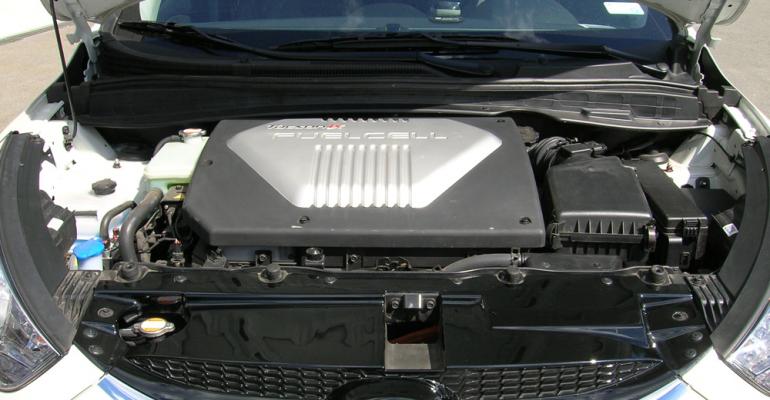BRUSSELS – A public-private partnership that is heading into its second phase in 2014 wants to make fuel-cell and hydrogen technology a reality in the European market in coming years.
“The fuel-cells and hydrogen technology is ready for demonstration, but it will take another couple of years before it is ready for market,” Bert De Colvenaer, executive director of the Fuel Cells and Hydrogen Joint Technology Initiative says during a European Parliament event in Brussels.
The initiative he is managing has obtained commitments of €1.4 billion ($1.9 billion) from the European Commission’s funding program for research and from the automotive and energy industries. “The ambition is to keep on improving the technology, to make it cheaper, long-term and with a long life,” De Colvenaer says.
The challenge, he says, is that currently there is no market for this technology. In the first phase of the intiative that launched in 2008, the industry worked alongside research centers to develop and demonstrate the technology; the upcoming phase will look into preparing it for the market.
“We are trying to introduce a fourth energy vector in the market besides gas, petroleum and electricity,” De Colvenaer says, noting that second-phase participants want to see the market mechanism embrace this developing energy technology.
To do that, projects receiving second-phase funding will be those that lower the cost of the technology and ensure that it enters into mass production. De Colvenaer says companies that never have worked together before, including those from the petroleum, gas and automotive industries, are collaborating in this partnership to put fuel-cell vehicles on the road.
“There will be no one winner in our community,” he says. “They will all win.”
De Colvenaer praises the cooperation between the energy industries and the EC in the first phase of the initiative. Funding for the companies was allocated in areas it most wanted to develop, while Brussels was able to guide the industry toward potential solutions for society’s transport and environmental needs.
This way of working will be perpetuated in the second phase of the partnership, De Colvenaer tells WardsAuto. But he cautions against setting hopes too high.
“A technology loop where you build something takes about five years,” he says. “You can’t increase the speed of technology development much.”
De Colvenaer believes hydrogen will be the solution for storing energy generated from renewable resources, and technically that already is possible. Hydrogen then would provide the link for Europe’s transition from fossil fuels to less-polluting forms of energy powering cars.
“Fuel cells and hydrogen will allow Europe to cope with sustainability and security of supply in the future,” he says.
That also will keep the EU at the forefront of technology and market development. Otherwise, De Colvenaer warns, “the international competition would be fierce, mostly with Japan and China.”
The initiative ultimately should help Europe do away with combustion engines, something European Parliament member Vittorio Prodi, an Italian Social Democrat, finds appealing.
“The joint undertaking is important per se,” says Prodi, a member of the Parliament committee on industry, research and energy. “But it also means so much for the development and advancement of our society.”
The final public funding for the partnership must be confirmed after the European Parliament and EU governments agree on an overall EU budget for 2014-2020. Confirmation is expected in the next two months.





